
How Shotcrete Can Be Used to Repair and Rehabilitate Concrete
Shotcrete offers an economical and effective alternative to large-scale concrete repair work
Benjamin Franklin once wrote that “In this world, nothing is certain except death and taxes.” In the world of structural engineering, it may be argued that concrete cracking and deterioration over time also fits into Franklin’s idiom. Fortunately, there are ways to repair, rehabilitate, and extend the functional life of this important building material using shotcrete.
Shotcrete Repair and Rehabilitation
In situations where large-scale repair of concrete is necessary and installation of formwork is either cost prohibitive or difficult, shotcrete offers an economical and effective solution. Shotcrete is comprised of cementitious products with aggregates similar to concrete but is “shot” pneumatically onto prepared substrates. Shotcrete may be installed on vertical or horizontal surfaces. Bonding agents like grout or epoxies (to name a few) that are typically needed with conventional concrete cold joints are not required as adhesion is achieved during the shotcrete installation process.
Shotcrete may be used to protect exposed reinforcing, replace deteriorated or damaged concrete, restore structural integrity, or increase the structural capacity of existing concrete members.
Shotcrete Installation
Shotcrete may be installed using a wet-mix or dry-mix process, achieving the same result. A contractor familiar with shotcrete installation and the correct equipment is paramount to the success of the installation. Test panels should be required to verify not only the mix design but the ability of the contractor to provide uniform and quality shotcrete application.
The existing concrete surface must also be prepared correctly. Deteriorated or spalled concrete should be removed back to sound concrete. Exposed reinforcing bars should be undercut to provide the ability for a physical bond to develop to the shotcrete. Repair boundaries should be a sawcut to facilitate correct shotcrete placement. We generally recommend using abrasive or high-pressure water blasting to accomplish most surface preparation requirements. Finally, the existing concrete substrate should be thoroughly wetted before shotcrete application.
Holter Dam Spillway Rehabilitation
One project where we used shotcrete was to rehabilitate the spillway on Holter Dam, a NorthWestern Energy facility. The 100-year-old concrete had spalled and deteriorated after years of severe exposure and freeze-thaw conditions. Consequently, reinforcement was exposed in multiple locations. Since access to the spillway is limited, and repairs were needed in hard-to-reach overhead and vertical wall locations, we selected a shotcrete overlay to rehabilitate the structure. (See the photos below for before and after conditions of the existing concrete and shotcrete rehabilitation.)
The Project Before and After
The photos in the top row show concrete before the rehabilitation process using shotcrete. The finished project photos are on the second row.
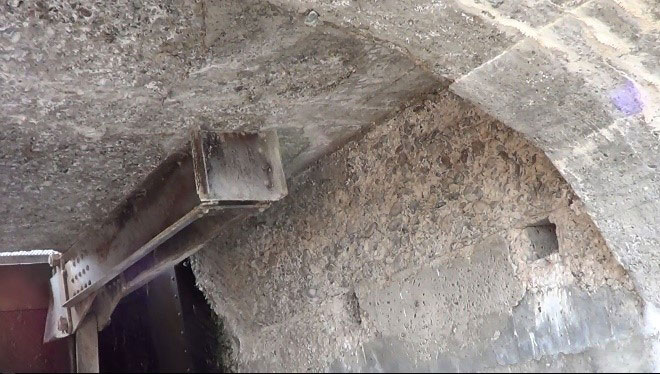
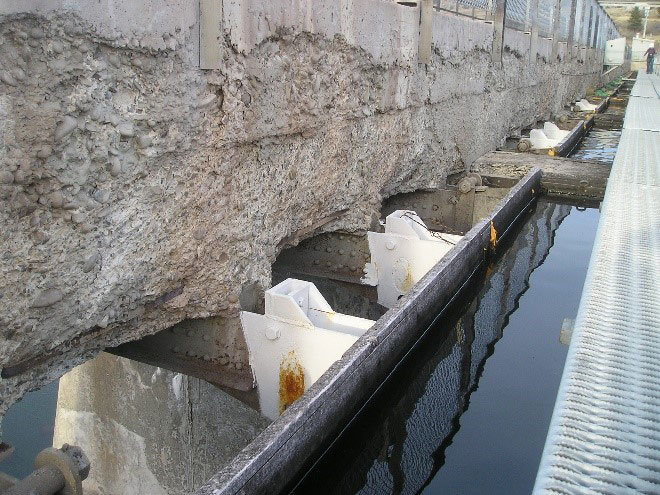
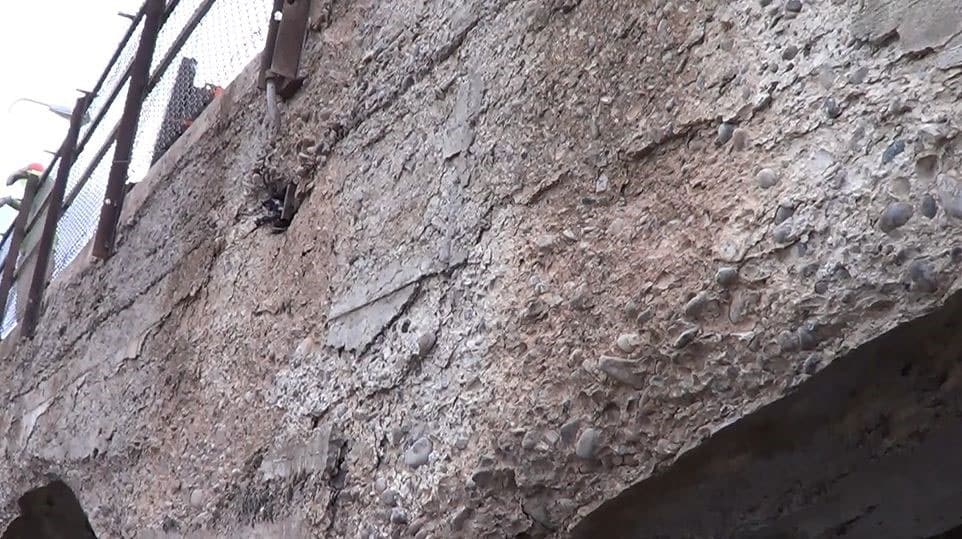

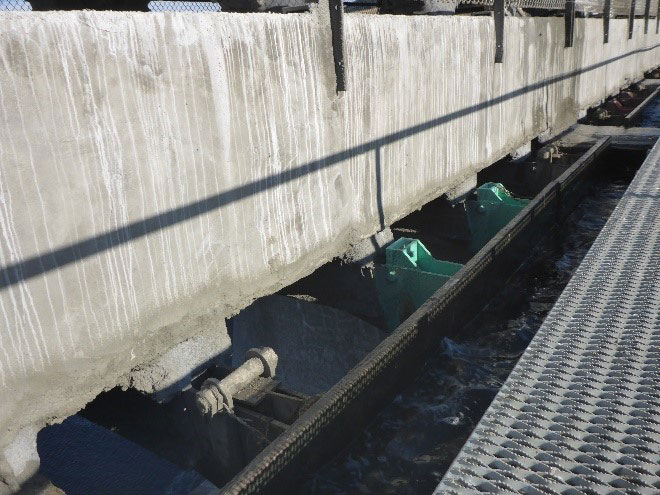
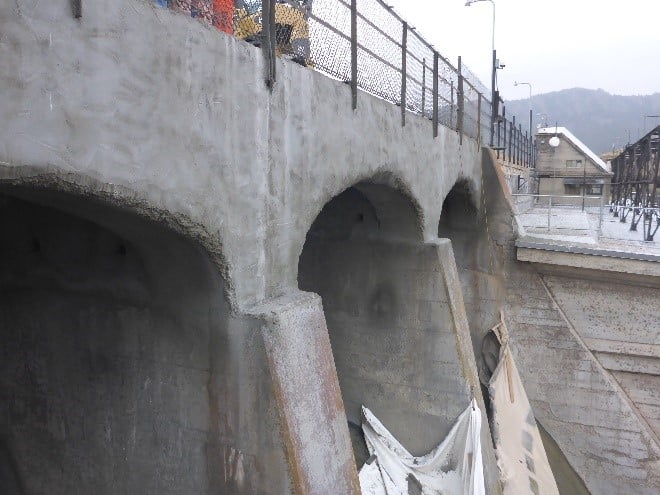
Hebgen Dam Outlet Pipe
Another project where we used shotcrete was to strengthen the Hebgen Dam outlet pipe, a NorthWestern Energy structure. The original Hebgen Dam outlet pipe consisted of a 12-foot diameter, 475-foot-long pipe passing through an 80-foot-tall earthen dam. The pipe was a wood stave banded together with steel ties and encased in concrete. This outlet is necessary to maintain flows in the Madison River and can see high-velocity flows during spring runoff.
The 105-year-old outlet pipe was deteriorating and needed to be repaired. We explored using slip-lining steel and HDPE pipe, shotcrete, conventional concrete, or fiber-reinforced polymer alternatives for the repair. Ultimately, we chose shotcrete due to the wet site condition, limited access, and the economy of installation. The reinforced shotcrete design completely replaced the existing lining and now provides stand-alone structural capacity. Reinforcing for the shotcrete was designed using a similar structural analysis typical to conventional concrete design.
The contractor on this project provided test panels on-site that were tested for both qualities of placement and strength properties. Once approved, the contractor placed reinforcement and began placing shotcrete lining in two lifts to achieve the designed thickness of 12 inches. No cold joints are created in the shotcrete placement as the impact of the pneumatic placement bonds the layers completely together.
The Project Before and After
These photos show this project before rehabilitating it using shotcrete for strengthening purposes.
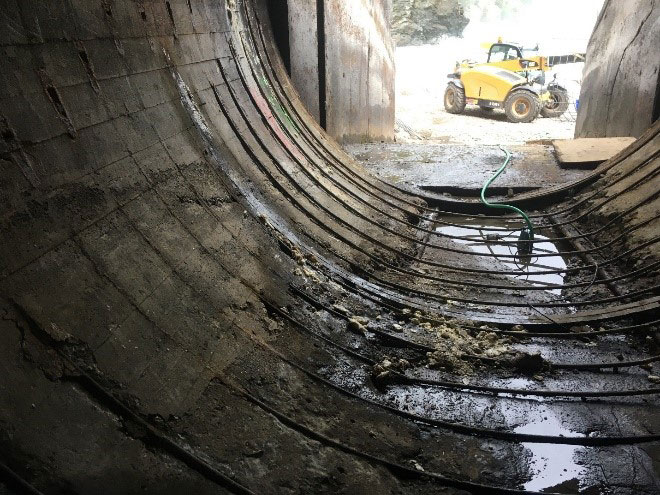
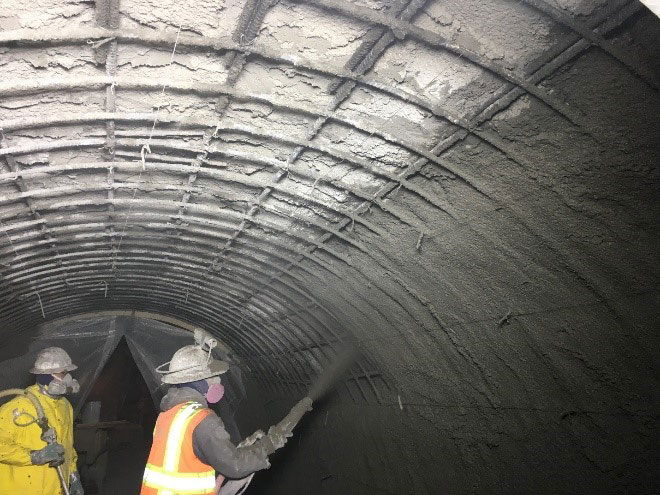
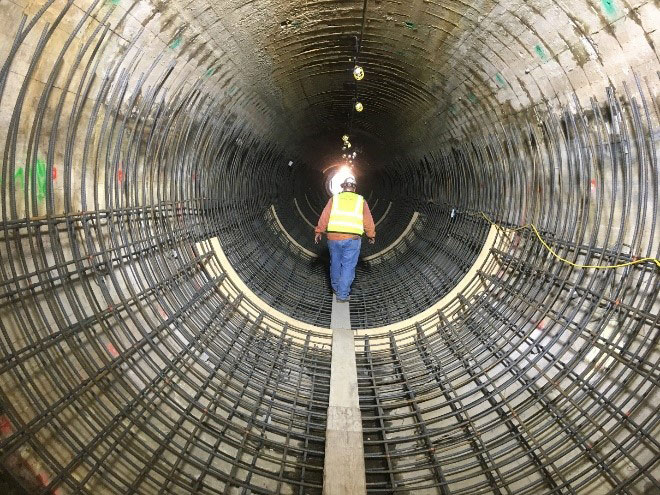
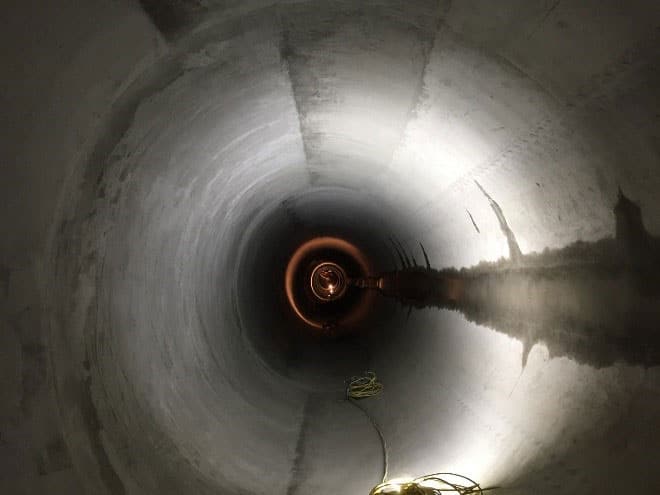
Shotcrete is a practical and efficient means of prolonging the life of existing concrete structures. While it may not work in all situations, its flexibility and ease of application make it an attractive alternative to other means of rehabilitation.
If you are ever considering the use of shotcrete on one of your projects give me a call and I’d be happy to help answer questions and provide additional insight.
Learn More About Shotcrete ApplicationsRelated Projects

Hebgen Dam Outlet Rehabilitation
NorthWestern Energy hired Morrison-Maierle to conduct a feasibility study and rehabilitation design for the Hebgen Dam Outlet Pipe.

Holter Dam Spillway Concrete Repair
NorthWestern Energy hired Morrison-Maierle to help with the Holter Dam’s spillway concrete repair. Holter Dam is a 1,364-foot-long and 124-foot-high concrete embankment dam on the Missouri River.

Morony Dam Spillway Modifications
Morrison-Maierle provided procurement specifications for the new gates, hoists, heated guide system, construction sequencing for the spillway and pier modifications, and hoist house enclosure design.
